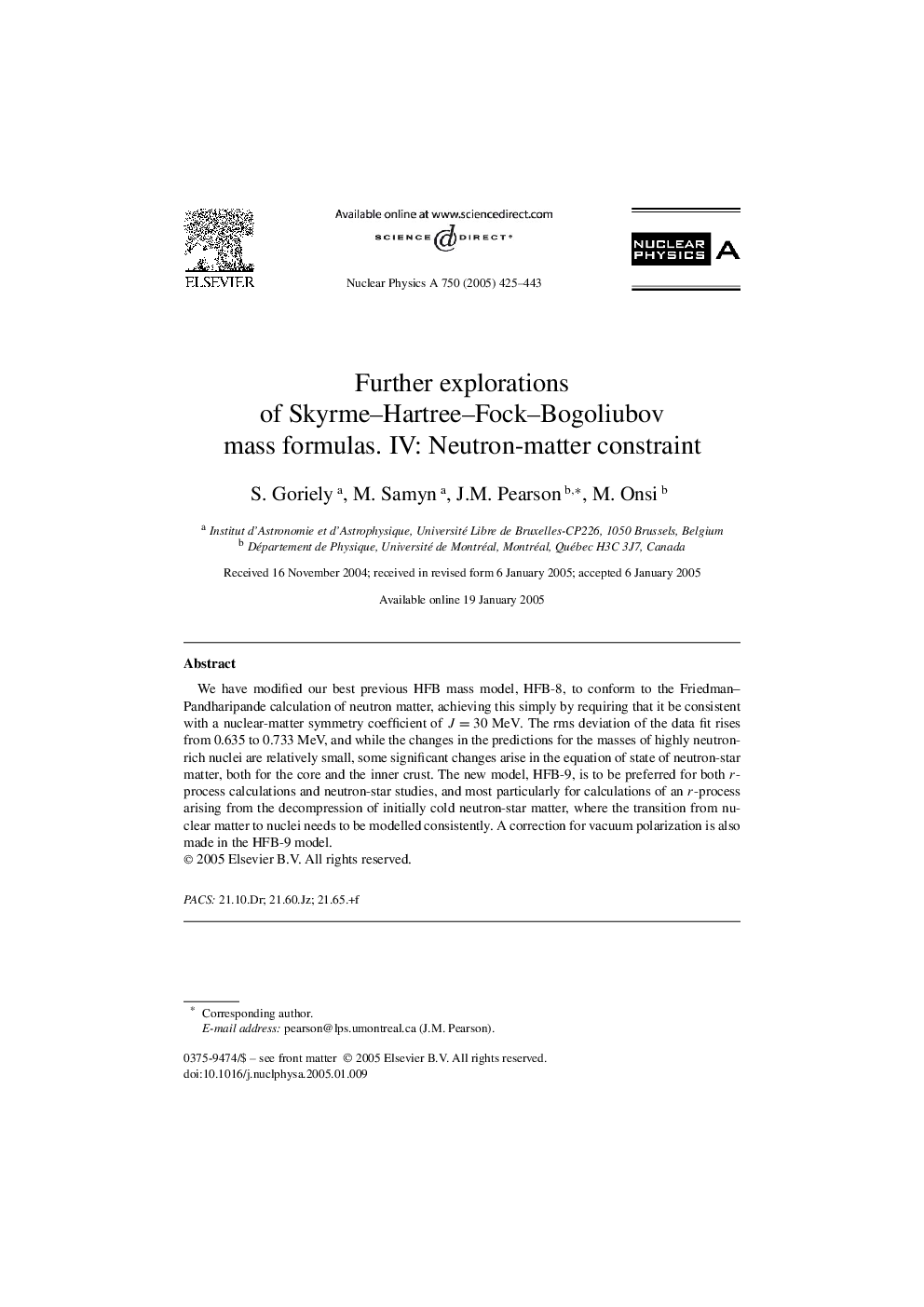| Article ID | Journal | Published Year | Pages | File Type |
|---|---|---|---|---|
| 9851378 | Nuclear Physics A | 2005 | 19 Pages |
Abstract
We have modified our best previous HFB mass model, HFB-8, to conform to the Friedman-Pandharipande calculation of neutron matter, achieving this simply by requiring that it be consistent with a nuclear-matter symmetry coefficient of J=30MeV. The rms deviation of the data fit rises from 0.635 to 0.733 MeV, and while the changes in the predictions for the masses of highly neutron-rich nuclei are relatively small, some significant changes arise in the equation of state of neutron-star matter, both for the core and the inner crust. The new model, HFB-9, is to be preferred for both r-process calculations and neutron-star studies, and most particularly for calculations of an r-process arising from the decompression of initially cold neutron-star matter, where the transition from nuclear matter to nuclei needs to be modelled consistently. A correction for vacuum polarization is also made in the HFB-9 model.
Related Topics
Physical Sciences and Engineering
Physics and Astronomy
Nuclear and High Energy Physics
Authors
S. Goriely, M. Samyn, J.M. Pearson, M. Onsi,
